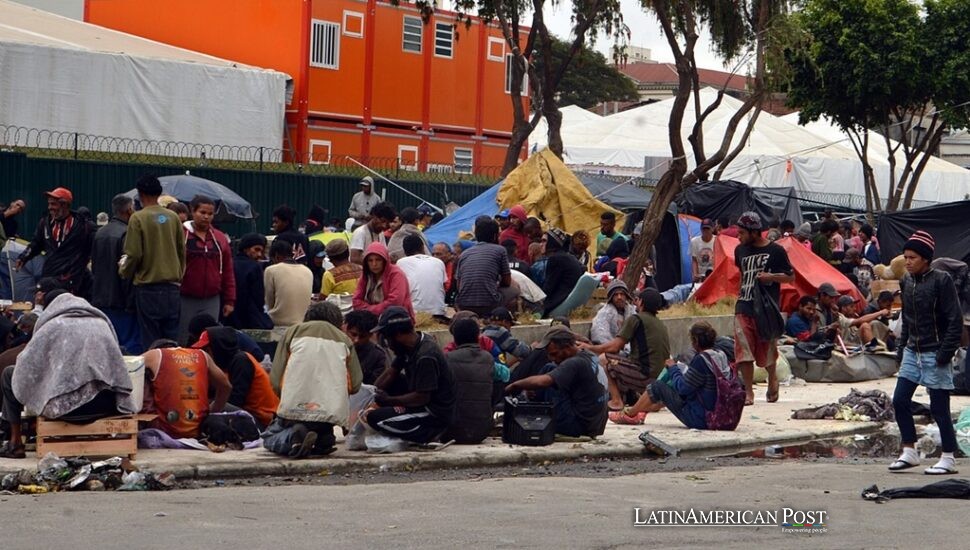Brazilian Police Sweep Sparks Turmoil In Sao Paulo’s “Crackland” City

A sudden police sweep has driven thousands of users from São Paulo’s notorious “Crackland.” City leaders cheer the empty streets, but those pushed aside—and the critics who follow them—warn that the real crisis now hides in darker corners.
Silence Falls on a Street That Never Slept
Marcelo Colaiácovo unlocked his bar expecting the same soundtrack that had rattled his windows for years: crack pipes clicking against coin tins, muffled arguments, police megaphones slicing dawn. Instead, he stepped into a hush. Tents, mattresses, those makeshift kiosks that traded lighters for single cigarettes—gone. Only fresh scrape marks on the curb told him this was the same avenida where crowds once smoked openly.
City workers appeared first, pressure-washing graffiti and shoveling trash into dump trucks. Then came the officials, trading grim nods for television cameras. Governor Tarcísio de Freitas and Mayor Ricardo Nunes called the operation a turning point, praising officers who had arrested more than a thousand people and dismantled what they labeled “one of Latin America’s largest open-air drug markets.” Their comments to the AP landed like confetti: “We are taking downtown back.”
Yet by dusk, smartphone videos captured thin silhouettes regrouping two blocks away, ringed by officers in riot helmets. That night a barefoot teenager tried to sleep under a bank awning; police hauled him off for trespassing. A man named Rogério told the AP the sweep cost him everything—including the guitar he strummed for spare change—after officers smashed it searching for hidden vials. “They want us invisible,” he said, “but addiction doesn’t vanish with tear gas.”
Lives Scattered, Problems Unmoved
With Crackland cordoned, users drifted into new micro-settlements—beneath highway overpasses, behind shuttered cinemas, inside the skeletons of half-finished towers. Social-media clips verified by the AP show nightly games of cat-and-mouse: police block one alley, the crowd re-forms in another. For residents nearby, fear simply changed ZIP codes.
Urban planners have seen this script before. Bulldoze a drug hub without offering treatment beds or housing, and all you create is a diaspora of despair. Catholic priest Júlio Lancelotti, speaking to the AP, called the operation “cosmetic surgery on an infected wound.” Of the 1,200 people funneled into detox clinics, he asks, how many will still be in care after a month? No law compels São Paulo to track them.
Crackland was never just a street; it was an ecosystem. Dealers, lookouts, recyclers, sex workers, wandering prophets with cardboard signs—all relied on proximity. Break that chain and you scatter the only safety net some users ever knew, frayed though it was. Studies long warned that without housing first—four solid walls, a door that locks—recovery often collapses. Those walls remain on blueprints, not city blocks.
A Gleaming Vision—and Its Shadow
Why the urgency now? Follow the money north to the governor’s five-billion-real plan to relocate state ministries to downtown. A gleaming bureaucratic campus needs clean sidewalks, not tents. Political timing matters too: de Freitas is rumored to eye the 2026 presidential race, and televised sweeps play well with voters weary of crime statistics.
For merchants like Colaiácovo, the absence of street dealers feels like breathing after a long hold. “I can unlock at night again,” he admits. Still, optimism is cautious. Past crackdowns lasted weeks, then police shipped out and the crowds seeped back like tidewater. Maintaining today’s flood of patrol cars will drain budgets tomorrow, and no one has explained how long the city will keep paying.
Meanwhile, the displaced push deeper into neighborhoods that were never prepared for them. Emergency room visits for overdoses are spiking in hospitals miles from the old epicenter. Outreach nurses now navigate unfamiliar alleyways where streetlights are rarer than syringes. “We chase a moving target,” one medic sighs, requesting anonymity as required by hospital policy cited by the AP.
After the Spotlight, What Remains?
Daybreak glints off newly buffed façades in what used to be Crackland. Tour buses may soon roll by, pointing at gentrifying art galleries and the state’s future office towers. Officials will cite slimmer crime logs and swelling property values. Yet on a far corner, a woman kneels to light the stub of a pipe, eyes darting for patrol lights.
São Paulo’s revival tale is not yet written. Will the city invest in the unglamorous work of permanent housing, psychiatric care, and job programs—tasks that outlast election cycles? Or will it rely on sirens and batons until the next surge erupts? As one urban researcher reminded the AP, “You can clear a square, but unless you treat the trauma fueling addiction, the square will refill.”
Also Read: Flight 980’s Vanishing Black Box: A Bolivian Aviation Enigma
Marcelo Colaiácovo wipes down his bar’s antique counter and listens. He hears nothing—no shouting, no police orders, no crackling fires. Quiet feels strange, almost untrustworthy, like a trick of the city’s restless night. He wonders how long it will last before the old soundtrack—or something darker—returns.





